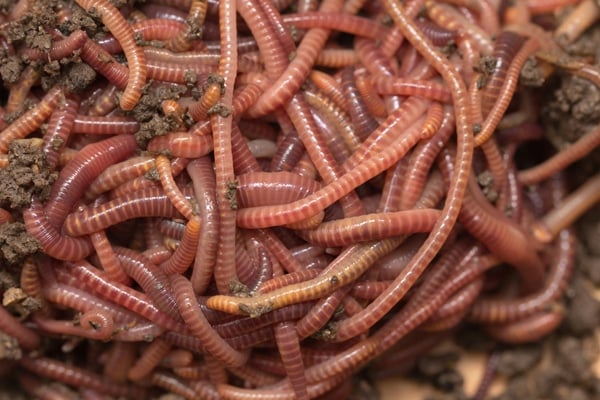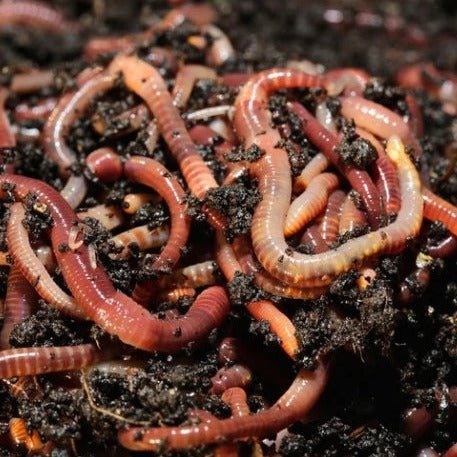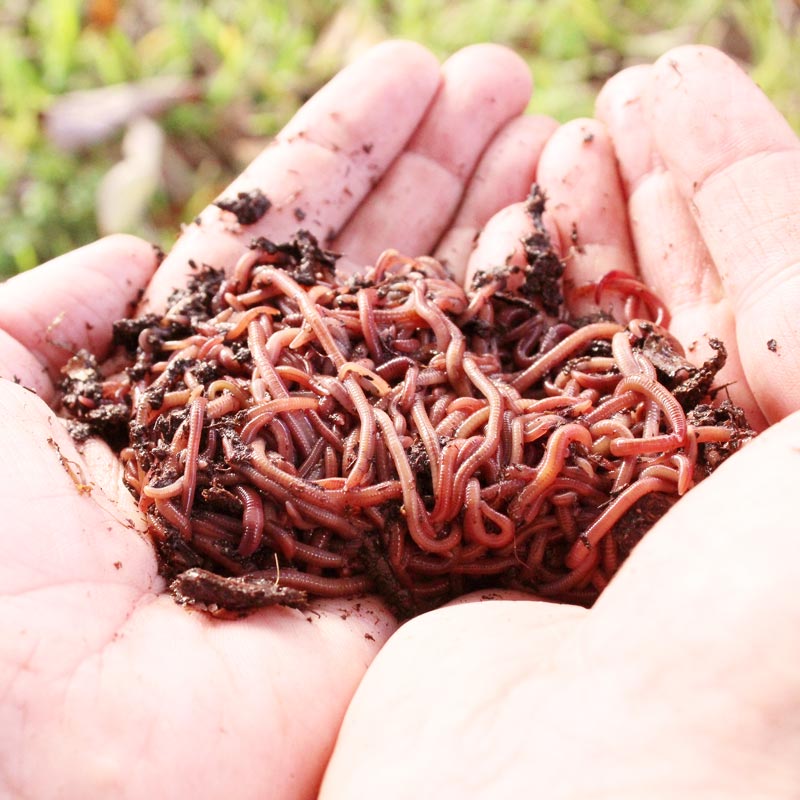Red Wigglers: The Unsung Heroes of Organic Waste Recycling
Red wigglers, or Eisenia fetida, act as critical agents in the organic waste recycling process, transforming thrown out products right into beneficial vermicompost. Their reliable break down of natural matter not only enhances dirt quality yet also adds to lasting waste administration methods. As the world significantly looks for remedies to fight waste accumulation and boost farming performance, comprehending the duty of these worms comes to be necessary. What mechanisms permit them to thrive in compost atmospheres, and how can they be effectively utilized in both household and industrial settings? Exploring these inquiries discloses the wider implications of vermicomposting in our eco-friendly landscape.
What Are Red Wigglers?
The exceptional resilience of red wigglers, medically called Eisenia fetida, emphasizes their crucial duty in natural waste recycling. These tiny, reddish-brown earthworms are normally found in breaking down organic issue, such as garden compost stacks and manure heaps. Lake Hickory Bait. Unlike other earthworm species, red wigglers thrive in nutrient-rich atmospheres and are highly reliable at breaking down natural products, making them necessary for vermicomposting

(Lake Rhodhiss Bait)In addition to their duty in waste reduction, red wigglers add to soil health and wellness by boosting soil structure and oygenation with their delving activities (Lake Hickory Bait). Their presence in composting systems not only enhances disintegration prices however also promotes a sustainable technique to waste monitoring, showing their significance in ecological preservation efforts
Benefits of Composting With Worms
Composting with worms, especially red wigglers, provides countless advantages that enhance both waste management and soil health. First, these worms efficiently break down organic waste, converting it into nutrient-rich vermicompost that enriches dirt. This process increases decomposition, permitting a much faster recycling of cooking area scraps and various other natural products compared to conventional composting techniques.
Furthermore, the vermicompost created by red wigglers is including beneficial microorganisms, which help boost dirt structure, aeration, and moisture retention. This enhances the overall wellness of plants, advertising vigorous growth and enhanced yields in gardens and agricultural setups. Moreover, using worms in composting decreases the production of greenhouse gases, such as methane, adding to an extra sustainable waste management system.

Exactly How to Begin Vermicomposting
Developing a vermicomposting system is a straightforward procedure that can produce significant benefits for both waste administration and soil enrichment. To begin, select an appropriate container, such as a plastic bin or wood box, with appropriate air flow openings to make sure proper air movement. The measurements must preferably be about 2 feet by 3 feet, allowing ample space for the worms to prosper.
Next, prepare bed linen product, which can be composed of shredded newspaper, cardboard, or coconut coir. This bed linen ought to be moistened to create a suitable habitat for the worms. Once the bedding is in area, present red wigglers (Eisenia fetida) right into the container, commonly around one extra pound of worms for every single square foot of surface.
Adhering to the positioning of worms, add natural waste, such as fruit and vegetable scraps, coffee grounds, and smashed eggshells. With these actions, you will efficiently initiate a vermicomposting system that adds to lasting waste management and improves your soil.
Maintaining a Healthy Worm Container
(Red Wiggler Express)Keeping a worm container thriving calls for routine focus and like make sure the health and wellness of the red wigglers and the efficiency of the composting process. Correct maintenance starts with keeping track of the dampness levels; the bin needs to be moist yet not soaked. An excellent guideline is to maintain a consistency comparable to a wrung-out sponge.
Aeration is critical as well. Carefully mixing the bed linen and food scraps every couple of weeks prevents compaction and makes sure that all worms have accessibility to oxygen. Furthermore, it is necessary to feed the worms properly. A well balanced diet regimen of fruit and vegetable scraps, coffee premises, and smashed eggshells should be provided in small amounts to stay clear of overfeeding, which can lead to odors and parasites.
If the container comes to be too warm or chilly, the worms may end up being stressed. By faithfully taking care of these variables, one can keep a durable and efficient worm bin.
Influence On Lasting Living
The effective maintenance of a worm bin not only profits the health and wellness of red wigglers however also contributes considerably to sustainable living practices. By reusing natural waste, such as kitchen area scraps and yard particles, red wigglers aid divert considerable amounts of product from garbage dumps. This reduction in waste not only decreases greenhouse gas emissions yet likewise reduces the environmental worry connected with waste administration.
Moreover, the spreadings created by red wigglers function as a nutrient-rich natural plant food, improving soil health and wellness and promoting plant development. This natural choice to chemical fertilizers sustains sustainable farming and gardening practices, lowering reliance on artificial inputs that can hurt communities. In addition, worm composting promotes recognition of waste administration, encouraging people and communities to embrace more sustainable behaviors.

Final Thought
In recap, red wigglers act as vital contributors to organic waste recycling with their reliable disintegration of organic materials. Their ability click to read to create nutrient-rich vermicompost improves dirt wellness and sustains lasting farming techniques. By incorporating vermicomposting right into waste monitoring strategies, individuals and communities can dramatically reduce waste while promoting ecological sustainability. The function of Eisenia fetida in cultivating healthy and balanced ecosystems highlights the value of these microorganisms in achieving lasting living and enhancing soil fertility.